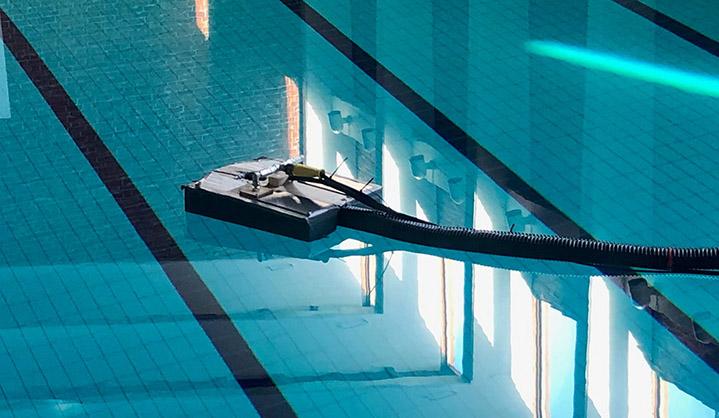The inspection and cleaning of the Fortum Loviisa nuclear plant’s steam generators is carried out every four years manually by people. The work is performed in a challenging environment and involves occupational safety risks. The relatively high radiation levels inside the steam generators add to the challenge of the work. An inspection and cleaning robot co-created by Jyväskylä University of Applied Sciences and Fortum is facilitating the work being done by people in the difficult conditions.
In a pressurised water reactor type of nuclear power plant, steam generators transfer thermal energy from the reactor to the turbines. The undisrupted operation of the steam generators is a prerequisite for the power plant to produce the wanted amount of energy. Thus it is especially important that the steam generators’ pipelines and structures remain clean and intact so that the steam generator functions as designed and radioactive water doesn’t enter other systems.
The solution developed by JAMK and Fortum can significantly improve work safety and reduce the share of work done inside the steam generators and the radiation doses the workers are exposed to.
“We started the project by mapping the possible alternatives for cleaning and inspecting steam generators. However, none of the existing alternatives were completely suitable for this purpose, so we decided to start collaborating with JAMK on the development of a robot that would be suitable for these tasks,” says Development Manager Ville Lestinen from Fortum.
The design, development, and factory tests related to the equipment were performed by JAMK in Jyväskylä. Fortum employees headed the project and brought the steam generator cleaning and inspection process expertise. The design work started in 2019, and the equipment was piloted in September 2020 in the annual outage of Loviisa unit 1.
“After many ideas, we ended up developing a robotic raft that carries the equipment needed in the maintenance. The complex structure of the inspection site and the very high safety requirements significantly increased the challenge level of the project,” says Senior Lecturer Jaakko Oksanen, a Project Manager working at JAMK.
During the project, modifications to the structures were made based on the tests performed at the Jyväskylä swimming pool. The goals and requirements set by Fortum were ultimately achieved through numerous material and equipment optimisations.
After the tests performed in the swimming pool environment, the raft was piloted at the Loviisa power plant.
“Taking images of the upper parts of the steam generator was very successful and inspecting the condition of the structures also went fine. The raft’s control systems operated as expected, and it was easy to manoeuvre the raft to the desired locations. In the further development phase, the focus will be on optimising the equipment’s shape and improving the ability to bypass the complex structures inside the steam generator,” Lestinen notes.
Overall, the raft pilot was more successful than expected. Inspired by the good experiences, the further development of the robot is already under way to get an improved raft ready for deployment in the next inspections of the power plant’s steam generators in 2022.
Further information:
Jaakko Oksanen, Senior Lecturer, JAMK University of Applied Sciences, +358407505860, [email protected]
Ville Lestinen, Development Manager, Fortum, +358504532427, [email protected]



